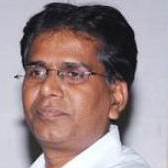International Journal of Intelligent Systems and Applications (IJISA)
IJISA Vol. 5, No. 9, 8 Aug. 2013
Cover page and Table of Contents: PDF (size: 439KB)
Performance Analysis of Rayleigh and Rician Fading Channel Models using Matlab Simulation
Full Text (PDF, 439KB), PP.94-102
Views: 0 Downloads: 0
Author(s)
Index Terms
Fading Channel, Wireless Communication, Rayleigh Fading, Rician Fading, Error Rate, Outage Probability
Abstract
An effort has been made to illustrate the performance comparison of the Rayleigh and Rician fading channel models by using MATLAB simulation in terms of source velocity and outage probability. We have developed algorithms for the Rayleigh and Rician fading channels, which computes the envelop and outage probability. The parameters such as source velocity and outage probability play very important role in the performance analysis and design of the digital communication systems over the multipath fading environment.
Cite This Paper
Sanjiv Kumar, P. K. Gupta, G. Singh, D. S. Chauhan, "Performance Analysis of Rayleigh and Rician Fading Channel Models using Matlab Simulation", International Journal of Intelligent Systems and Applications(IJISA), vol.5, no.9, pp.94-102, 2013. DOI:10.5815/ijisa.2013.09.11
Reference
[1]Bernard Sklar. Rayleigh Fading Channels in Mobile Digital Communication Systems Part 1: Characterization. IEEE Comm., 1997, v35, n7, pp.90-100.
[2]William C. Jakes. Microwave Mobile Communications. John Wiley, New York, 1974.
[3]John G. Proakis. Digital Communications. McGraw-Hill, Singapore, 1995.
[4]T. S. Rappaport. Wireless Communications – Principles and Practice. Prentice Hall, New Jersy, 1999.
[5]R. H. Clarke. A statistical theory of mobile radio reception. Bell Systems Technical Journal, 1968, v47, n6, 1968, pp.957-1000.
[6]P. Dent, G. E. Bottomley, T. Croft. Jakes fading model revisited. Electronics Letters, v29, n13, 1993, pp.1162-1163.
[7]‘Fading’ – Online Article in Wikipedia en.wikipedia.org/wiki/Fading
[8]W. R. Bennett. Distribution of the sum of randomly phased components. Quart. Appl. Math, v5, 1948, pp.385-393.
[9]L. Rayleigh. On the resultant of a large number of vibrations of the same pitch and of arbitrary phase. Philosophical Mag., v27, n6, 1880, pp.460-469.
[10]Haowei Bai, Mohammed Antiquzzaman. Error modeling schemes for fading channels in wireless communications. IEEE Comm. Surveys and Tutorials, v5, n2, 2003, pp.2-9.
[11]Matthias Patzold. Mobile Fading Channels. John Wiley, 2002, England.
[12]M. J. Omidi, S. Pasupathy, P. G. Gulak. Joint data and channel estimation for Rayleigh fading channels. Wireless Personal Communications, v10, 1999, pp.319-339.
[13]M. Nakagami, W. C. Hoffman. The m-distribution A General Formula of Intensity Distribution of Fading. Statistical Methods in Radio Wave Propagation, 1960, Pergamon.
[14]M. Patzold, U. Killat, F. Laue. On the statistical properties of deterministic simulation models for mobile fading channels. IEEE Trans. Vehicular Technology, v47, n1, 1998, pp.254-269.
[15]W. C. Y. Lee. Mobile Communications Design Fundamentals. John Wiley, New York, 1993.
[16]H. Suzuki. A statistical model for urban radio propagation. IEEE Trans. on Comm.,v27, 1977, pp.673-680.
[17]W. R. Braun, U. Dersch. A physical mobile radio channel model. IEEE Trans. on Vehicular Technology, v40, 1991, pp.472-482.
[18]T. Eng, N. Kong, L. B. Milstein. Comparison of diversity combining techniques for Rayleigh fading channels. IEEE Trans. on Communications, v44, n9, 1996, pp.1117-1129.
[19]C Xiao, Y. Zheng, N C Beaulieu. Novel sum-of-sinusoids simulation model for Rayleigh and Rician fading channels. IEEE Trans. Wireless Communication, v5, n12, 2006, pp.3667-3679.
[20]Y.-D Yao, A U H Sheikh. Outage probability analysis for microcell mobile radio systems with co-channel interferers in Rician/Rayleigh fading environment. Electronic Letter, v26, n13, 1990, pp.864-866.
[21]C. Xiao, Y. Zheng, N. C. Beaulieu. Statistical simulation model for Rayleigh and rician fading. Proceedings of IEEE International Conference on Communication, 2003, pp.3524~3529.



